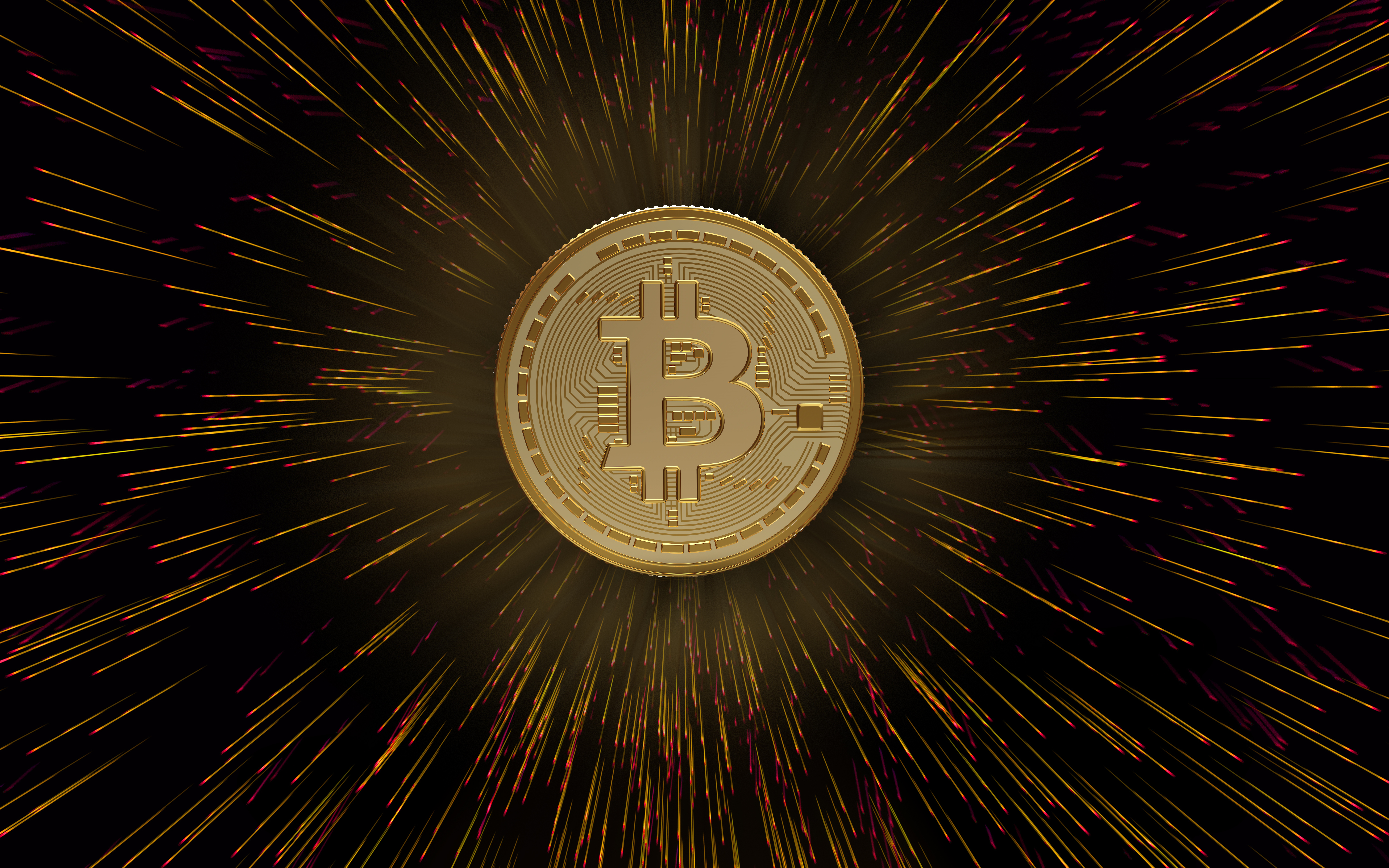The Explosion of Bitcoin

From Wall Street Journal articles and editorials in Barron’s, to Facebook posts and holiday dinner conversations, Bitcoin is everywhere. This is not surprising when you consider Bitcoin’s exponential growth in 2017. In a year where the market saw new highs, one of the top performing mutual funds returned 105.73 percent¹, and a top performing stock in the S&P 500 saw 132.3 percent growth (NGR)², Bitcoin’s growth made these all pale in comparison. (S&P 500 Index is an unmanaged group of securities considered to be representative of the stock market in general. You cannot directly invest in the index.) Up 1,390.0 percent in 2017³, we feel that its performance and proliferation is unquestionable.
This growth prompted financial institutions to stop and pay attention. Derivatives trading on Bitcoin started in October 2017.⁴ Then in December several exchanges started offering future trading on Bitcoin4, and the NYSE filed with the SEC to list Bitcoin ETFs5. Possibly the only thing growing faster than the services surrounding Bitcoin, is Bitcoin itself.
The Basics
Say you’re hungry and feel like ordering a Subway sandwich, or want to book a week of travel on expedia.com. Pull out your credit card, enter all your personal information into their site and hope no one steals the information you just put out onto the web. Subway and Expedia must wait for the credit card company to process the payment, take a 2-3 percent cut, and eventually transfer the money. Or you could decide to pay with Bitcoin, a digital currency that utilizes thousands of computers around the world to verify that a secure transaction is taking place, and processes it quickly. Before getting too much further into the potential of Bitcoin, it’s best to take a step back and start with the basics. The first thing to understand is the underlying technology, blockchain. Blockchain can be viewed as a ledger where each transaction is recorded, along with all previous transactions. This creates an accounting chain that records the history of all payments between people who utilize this ledger. To do this, a computer program takes every transaction and creates a specific code. Those exact transactions will always create that one specific code, but if any transaction is changed, the code will be completely different. All other computers connected to the blockchain are able to enter the same transactions and generate the same code. This is how the technology ensures no one can manipulate transactions or ownership history, as their code would be different than everyone else's. This process of creating the code is expensive and time consuming, and the people conducting this process, called miners, are rewarded with a "coin" for their efforts. Miners are then able to use this coin, or cryptocurrency, in exchange for goods or services like those mentioned above.
What does this mean?
This technology brings the potential for new and interesting capabilities. Blockchain allows for the ability to prove ownership of a digital asset. This opens the door to digital currency that can possess value, as it can no longer be digitally copied or reproduced by others. Digital currency opens the door for globalization of money movement with minimal friction:
- The speed of transferring assets can increase; fees and costs could decrease as fewer middlemen are involved in transactions.
- Political and corporate influence could be minimal. No entity has control over the currency because this ledger is not stored or managed by one entity, but rather it’s stored around the world.
- Certain cryptocurrencies (e.g., Ether/Etherium) also open the door to “Smart Money”, or programmable money. Complex contracts can be created with automatic payments when terms are met.
While this may sound like the budding of a new asset class and the chance to get in on the ground floor of cutting-edge technology, there are still several concerns that give investors pause. First, the infrastructure and widespread acceptance isn’t in place yet to allow the frictionless transactions hypothesized above. Many users still experience delays or must rely on complex solutions to transfer assets.6 Uncertainty surrounding potential regulatory or legal hurdles give investors pause. There is also an association between cryptocurrencies and the sale of illegal goods. Its use on the illegal goods website “Silk Road” still leave many wary of cryptocurrencies’ legitimacy.7 The final hurdle for many investors is how to value such a complex and new technology. Traditional methods for determining what a stock is worth does not work for evaluating blockchain, Bitcoin or other cryptocurrencies.
Is it appropriate for a retirement plan?
Now armed with this information, the question arises, “Should I offer this in my retirement plan?” For now the answer is: No. You are bound by the fiduciary responsibility to select and monitor appropriate investment options for plan participants. The vast majority of participants do not have the knowledge or expertise to make an informed and prudent allocation to this sector. For the same reason you wouldn’t offer currency exchange rate investments within your plan, offering a Bitcoin focused option is far too specialized for the vast majority of participants. This type of offering would drastically increase fiduciary risk and liability. Second, the volatility that is seen in the sector can lead to a bumpy participant ride and poor participant outcomes. Often participants are overly risk averse and when account values drop, we can see a flight to safety. This flight to safety is often a hindrance to the long run retirement readiness of participants. Bitcoin valuations are very volatile, and this could significantly hinder participant outcomes. Drops of 30 percent were not unheard of in 2017.8 In November, Bitcoin’s price fell more than $2,000 (approximately 20 percent) within one trading day, half of which it lost in the matter of 10 minutes.9 This level of volatility is not the ride you want for your participants. They do not have the ability to exit positions during these wild swings, and steep losses can drive participants away from appropriate asset allocation.
While the innovative technology and recent returns can make this an exciting story to follow, wild valuation swings and uncertainty on a number of fronts make it clear: with regard to your retirement plan, it’s best to watch from the sidelines for now.
- Morningstar
- Seeking Alpha. Best and Worst Performing S&P 500 Stocks in 2017
- 2017 Market Performance: Crypto vs. Stocks
- The bitcoin futures race is on
- NYSE files to list bitcoin ETFs, bringing cryptocurrency a step closer to mainstream
- Hash Power – A Documentary on Blockchains & Cryptocurrencies, Patrick O’Shaughnessy, CFA. 2017.
- Wikipedia. Silk Road (marketplace)
- 5 Big Bitcoin Crashes: What We Learned
- Bitcoin’s Price Swings Have Been Especially Crazy in the Last 24 Hours. Here’s Why
Past Performance does not guarantee future results. Investing involves risk, including risk of loss. Stock markets are volatile and can decline significantly in response to adverse issuer, political, regulatory, market, or economic developments. Investors should consider carefully information contained in the prospectus, including investment objectives, risks, charges and expenses. Please read the prospectus carefully before investing. ETFs do not sell individual shares directly to investors and only issue their shares in large blocks. Exchange-traded funds are subject to risks similar to those of stocks. Investment returns will fluctuate and are subject to market volatility, so that an investor's shares, when redeemed or sold, may be worth more or less than their original cost.
Mutual funds are sold by prospectus only. Before investing, investors should carefully consider the investment objectives, risks, charges and expenses of a mutual fund. The fund prospectus provides this and other important information. Please contact your representative or the Company to obtain a prospectus. Please read the prospectus carefully before investing or sending money.
ACR#276410 03/18



